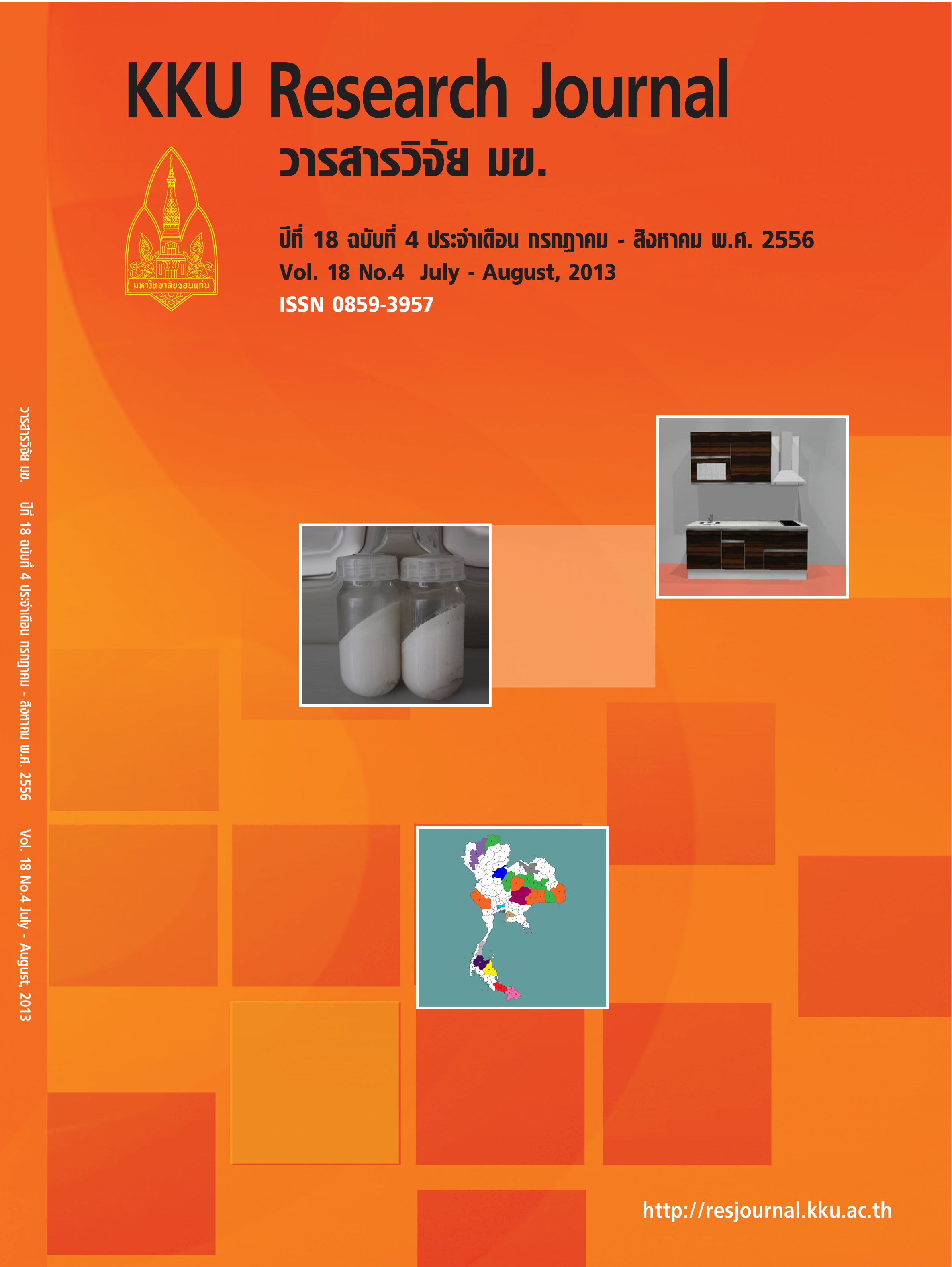Effects of tapping system and rubber tree age on quantity and quality of latex
Main Article Content
Abstract
In this study, the quantity and quality of latex of rubber tree (Hevea brasiliensis Muell. Arg.)as affected by 2 types of tapping system, one-half of trunk circumference (S/2) and one-third of trunk circumference (S/3), were studied using rubber trees grown at Nakorn Si Thammarat province. Clone RRIM600 at 2 ages of tree: less than 10 years and more than 10 years after tree opening were compared.Two clones, RRIM600 and PB255, of trees tapped for longer than 5 years were also compared.The latex was collected at 2nd and 4th h after tapping (n=10).Yield, % dry rubber content (DRC) and % lutoids were recorded.S/2 tapping system provided significantly higher yield than S/3 but did not affect % DRC and % contaminants. Rubber tree tapped for longer than 10 years gave more yield and % DRCthan those tapped for less than 10 years. RRIM600 gave higher yield and %DRC than PB255. Moreover, contaminants (e.g., lutoids) were found largely at 4th h after tapping, especially in S/2 of PB255 trees tapped more than 10 years.
Article Details
How to Cite
Chumsri, T., Kongsawadworakul, P., Vinijsanun, T., & Chintakovid, W. (2017). Effects of tapping system and rubber tree age on quantity and quality of latex. Asia-Pacific Journal of Science and Technology, 18(4), 608–615. retrieved from https://so01.tci-thaijo.org/index.php/APST/article/view/82896
Section
Research Articles


